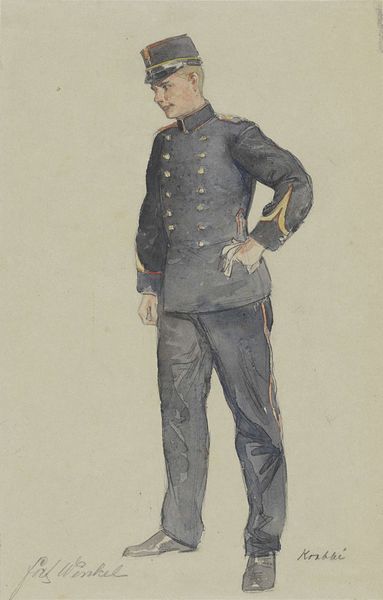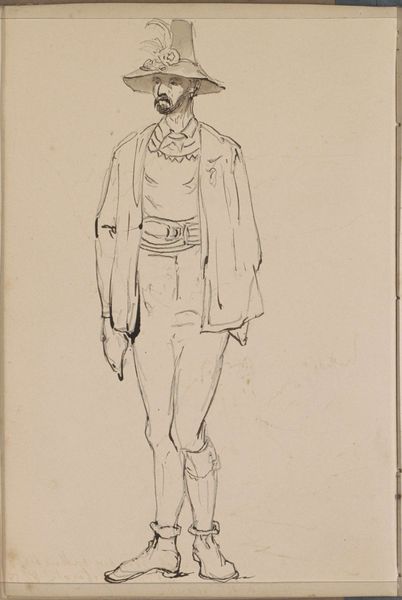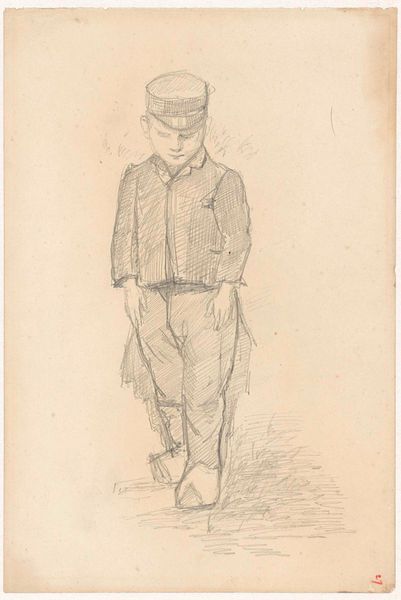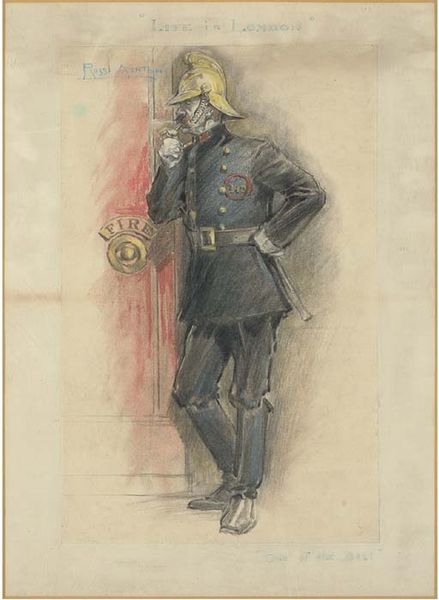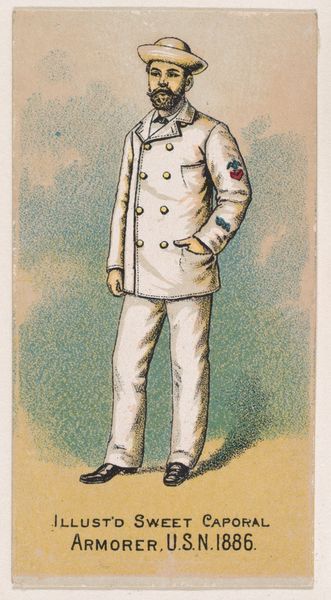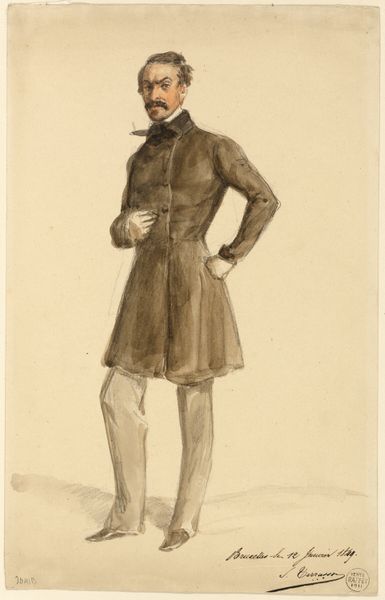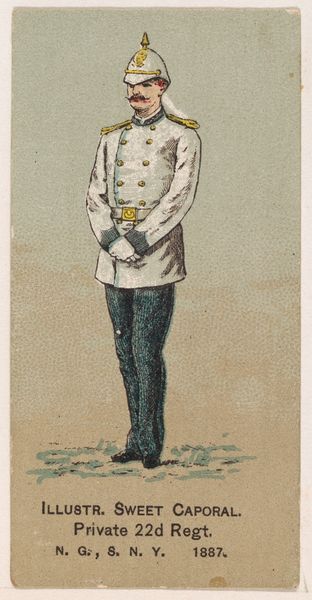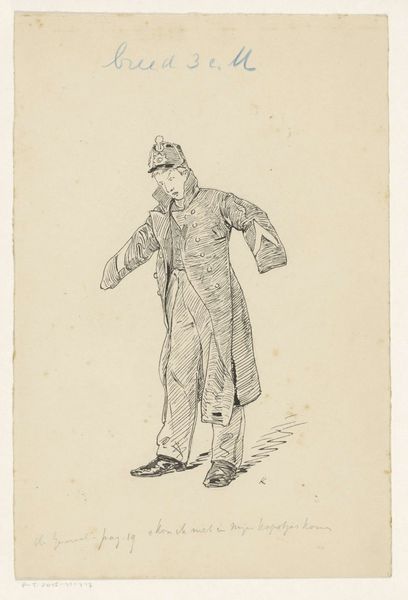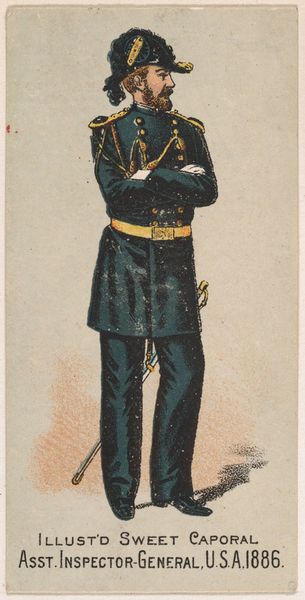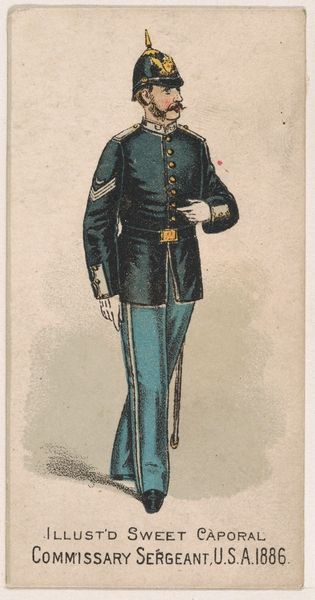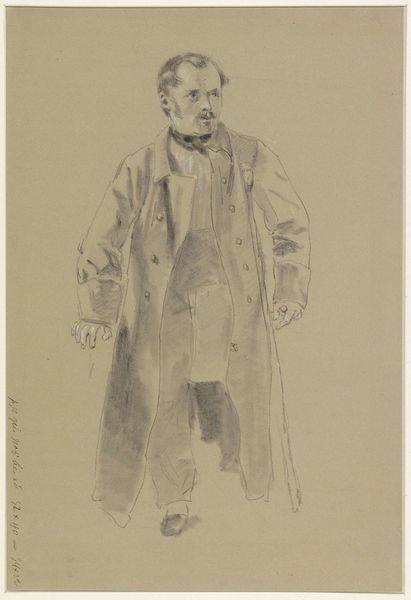
Copyright: Public domain
Curator: Immediately, I am struck by the somber tone—an atmosphere conveyed through a limited palette of greys and the stiff, almost uneasy, posture of the figure. Editor: Indeed. We’re looking at "La Légionnaire," a pencil drawing executed by Théophile Alexandre Steinlen in 1915. The date alone speaks volumes, doesn't it? This was the height of the First World War. Curator: Absolutely. I think that historical context is critical. Observe the composition itself—the Legionnaire dominates the frame. His expression, that heavy brow and pronounced mustache—details which are sketched rapidly, but confidently—speak to the resolve perhaps, or at least the resignation, required during wartime. Editor: The very roughness of the pencil strokes, the visible hatching that defines his uniform, all contribute to a sense of immediacy. Steinlen isn’t idealizing or glorifying war, as so many artists were compelled to do. He captures something far more visceral. Consider, too, the medium itself—pencil—a tool readily available, unpretentious. Curator: I would argue that the visible strokes contribute a sort of vitality as well. The slightly blurred outlines and tonal variation through pencil weight produce form that conveys an energetic essence in this work. Editor: Perhaps that’s where we disagree! To my mind, it amplifies the provisional nature of existence at the time. The quickness seems linked to both the precarious nature of a soldier’s life and Steinlen’s larger engagement with political subjects through illustration. What else is there for an artist in times of turmoil, but observation and protest. This isn’t art made for the salon, but art created as a reaction, as an outcry. Curator: I can't dismiss your interpretation, particularly as his prints often convey such sociopolitical commentary. And it reminds me that the sketch is dated, 'Paris 30 Juillet,' giving a precise sense of moment within historical turmoil. So there's clear tension between surface, representation and a very particular point in time. Editor: Precisely. To contemplate the materiality, the mark making of pencil, and the time that informed its subject... Curator: Gives me much to reconsider regarding Steinlen’s approach. Editor: Yes, an experience deepened when seeing the marks physically close.
Comments
No comments
Be the first to comment and join the conversation on the ultimate creative platform.
